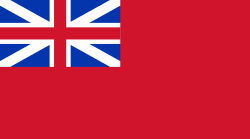Province of South Carolina
| Province of South Carolina | ||||||||||
| Colony of Great Britain | ||||||||||
| ||||||||||
 | ||||||||||
| Capital | Charles Towne | |||||||||
| Languages | English, Catawba, Cherokee, Chickasaw, Muscogee, Yuchi, Shawnee | |||||||||
| Government | Constitutional monarchy | |||||||||
| Legislature | Commons House of Assembly | |||||||||
| Historical era | Colonial Era | |||||||||
| • | Established | 1712 | ||||||||
| • | Independence | 1776 | ||||||||
| Currency | Pound sterling | |||||||||
| ||||||||||
| Today part of | | |||||||||

The Province of South Carolina[1] (also known as the South Carolina Colony) was originally part of the Province of Carolina in British America, which was chartered by eight Lords Proprietor in 1663. The province later became the U.S. state of South Carolina.
History
The Carolinas were named for King Charles II of England. Derived from Latin Carolus, the colony was originally "Carolana," the spelling eventually changed to "Carolina." [Note that Carolana was also the name of a failed settlement plan in the late 1690s.] Charles Towne was the first settlement, established in 1670.
Charles II had given the land to a group of eight nobles called the Lords Proprietors; they planned for a Protestant Christian colony. Originally a single proprietary colony, the northern and southern sections grew apart over time, due partly to neglect by the (individual) legal heirs of the original Lords Proprietor. Dissent over governance of the province led to the appointment of a deputy governor to administer the northern half of the Carolina colony in 1691. The division of the Carolina Province into North Carolina and South Carolina became complete in 1712.
The Yamasee War (1715–1717) ravaged the back-country of the colony. Complaints that the proprietors had not done enough to protect the colonists against either the Indians or the neighboring Spanish, during Queen Anne's War, convinced many residents of the necessity of ending proprietary rule. A rebellion broke out against the proprietors in 1719. Acting on a petition of the residents of the colony, the British government appointed a royal governor for South Carolina in 1720. (The governor of North Carolina would continue to be appointed by the Lords Proprietor until 1729.)
After nearly a decade in which the British government sought to locate and buy out the proprietors, both North Carolina and South Carolina became British royal colonies in 1729.
Lord Charles Montagu (1741-1784) was Royal Governor of the Province of South Carolina from 1766 to 1773 until he escaped to Nova Scotia as with fellow United Empire Loyalists.
Judiciary
The Court of King's Bench and Common Pleas was founded c.1725, based in Charles Town (Charleston).
- List of Chief Justices
- [2]
| Incumbent | Tenure | Notes | |
|---|---|---|---|
| Took office | Left office | ||
| Edmund Bohun | 1698 | 1699 | died in office of fever |
| Nicholas Trott | c.1702 | 1718 | dismissed from office after uprising |
| Richard Alleyn | 1719 | ||
| Robert Wright | 1730 | 1739 | died in office |
| Thomas Dale | 17 Oct 1739 | Nov 1739 | |
| Benjamin Whitaker | 7 Nov 1739 | 1749 | removed from office due to paralysis |
| James Graeme | 6 Jul 1749 | ||
| Charles Pinckney | 1752 | 1753 | |
| Peter Leigh | 1753 | ||
| James Michie | 1 Sep 1759 | 16 Jul 1760 | died in office, London, England |
| William Simpson | 24 Jan 1761 | ||
| Charles Skinner | 1762 | ||
| Thomas Knox Gordon | 13 May 1771 | ||
| William Henry Drayton | 13 Apr 1776 | ||
| John Rutledge | 16 Feb 1791 | 1795 | resigned and afterwards Chief Justice of the United States |
| after 1791 no further Chief Justices were appointed. | |||
See also
- History of South Carolina
- Colonial period of South Carolina
- Grand Model for the Province of Carolina
- List of colonial governors of South Carolina
- Elizabeth Timothy
- Louis Timothee
References
- ↑ D.J. McCord (1839). The Statutes at Large of South Carolina. 6. A.S. Johnston. p. 616. ISBN 978-5-87571-708-6.
- ↑ The Statutes at Large of South Carolina. 1. A.S. Johnston. 1836. p. 439.
Further reading
- Coclanis, Peter A., “Global Perspectives on the Early Economic History of South Carolina,” South Carolina Historical Magazine, 106 (April–July 2005), 130–46.
- Crane, Verner W. The Southern Frontier, 1670-1732 (1956)
- Edgar, Walter. South Carolina: A History, (1998) the standard scholarly history
- Edgar, Walter, ed. The South Carolina Encyclopedia, (University of South Carolina Press, 2006) ISBN 1-57003-598-9, the most comprehensive scholarly guide
- Feeser, Andrea. Red, White, and Black Make Blue: Indigo in the Fabric of Colonial South Carolina Life (University of Georgia Press; 2013) 140 pages; scholarly study explains how the plant's popularity as a dye bound together local and transatlantic communities, slave and free, in the 18th century.
- Smith, Warren B. White Servitude in Colonial South Carolina (1961)
- Tuten, James H. Lowcountry Time and Tide: The Fall of the South Carolina Rice Kingdom (University of South Carolina Press, 2010) 178 pp.
- Wallace, David Duncan. South Carolina: A Short History, 1520-1948 (1951) online standard scholarly history
- Wright, Louis B. South Carolina: A Bicentennial History' (1976) online, popular survey
- Wood, Peter H. Black Majority: Negroes in Colonial South Carolina from 1670 Through the Stono Rebellion (1996)

